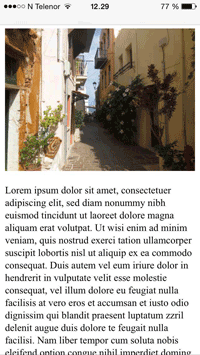The HTML <head> Element
The <head> element is a container for metadata (data about data) and is placed between the <html> tag and the <body> tag.
HTML metadata is data about the HTML document. Metadata is not displayed.
Metadata typically define the document title, character set, styles, links, scripts, and other meta information.
The following tags describe metadata: <title>, <style>, <meta>, <link>, <script>, and <base>.
The HTML <title> Element
The <title> element defines the title of the document, and is required in all HTML/XHTML documents.
The <title> element:
- defines a title in the browser tab
- provides a title for the page when it is added to favorites
- displays a title for the page in search engine results
A simple HTML document:
Example
<!DOCTYPE html>
<html>
<head>
<title>Page Title</title>
</head>
<body>
The content of the document......
</body>
</html>
Try it Yourself »The HTML <style> Element
The <style> element is used to define style information for a single HTML page:
Example
<style>
body {background-color: powderblue;}
h1 {color: red;}
p {color: blue;}</style>
Try it Yourself »The HTML <link> Element
The <link> element is used to link to external style sheets:
Example
<link rel="stylesheet" href="mystyle.css">
Try it Yourself »The HTML <meta> Element
The <meta> element is used to specify which character set is used, page description, keywords, author, and other metadata.
Metadata is used by browsers (how to display content), by search engines (keywords), and other web services.
Define the character set used:
<meta charset="UTF-8">
Define a description of your web page:
<meta name="description" content="Free Web tutorials">
Define keywords for search engines:
<meta name="keywords" content="HTML, CSS, XML, JavaScript">
Define the author of a page:
<meta name="author" content="John Doe">
Refresh document every 30 seconds:
<meta http-equiv="refresh" content="30">
Example of <meta> tags:
Example
<meta charset="UTF-8">
<meta name="description" content="Free Web tutorials">
<meta name="keywords" content="HTML,CSS,XML,JavaScript">
<meta name="author" content="John Doe">
Try it Yourself »Setting The Viewport
HTML5 introduced a method to let web designers take control over the viewport, through the <meta> tag.
The viewport is the user's visible area of a web page. It varies with the device, and will be smaller on a mobile phone than on a computer screen.
You should include the following <meta> viewport element in all your web pages:
<meta name="viewport" content="width=device-width, initial-scale=1.0">
A <meta> viewport element gives the browser instructions on how to control the page's dimensions and scaling.
The width=device-width part sets the width of the page to follow the screen-width of the device (which will vary depending on the device).
The initial-scale=1.0 part sets the initial zoom level when the page is first loaded by the browser.
Here is an example of a web page without the viewport meta tag, and the same web page with the viewport meta tag:
The HTML <script> Element
The <script> element is used to define client-side JavaScripts.
This JavaScript writes "Hello JavaScript!" into an HTML element with id="demo":
Example
<script>
function myFunction {
document.getElementById("demo").innerHTML = "Hello JavaScript!";
}</script>
Try it Yourself »The HTML <base> Element
The <base> element specifies the base URL and base target for all relative URLs in a page:
Example
<base href="https://www.w3schools.com/images/" target="_blank">
Try it Yourself »Omitting <html>, <head> and <body>?
According to the HTML5 standard; the <html>, the <body>, and the <head> tag can be omitted.
The following code will validate as HTML5:
Example
<!DOCTYPE html>
<title>Page Title</title>
<h1>This is a heading</h1>
<p>This is a paragraph.</p>
Try it Yourself »HTML head Elements
| Tag | Description |
|---|---|
| <head> | Defines information about the document |
| <title> | Defines the title of a document |
| <base> | Defines a default address or a default target for all links on a page |
| <link> | Defines the relationship between a document and an external resource |
| <meta> | Defines metadata about an HTML document |
| <script> | Defines a client-side script |
| <style> | Defines style information for a document |



No comments:
Post a Comment